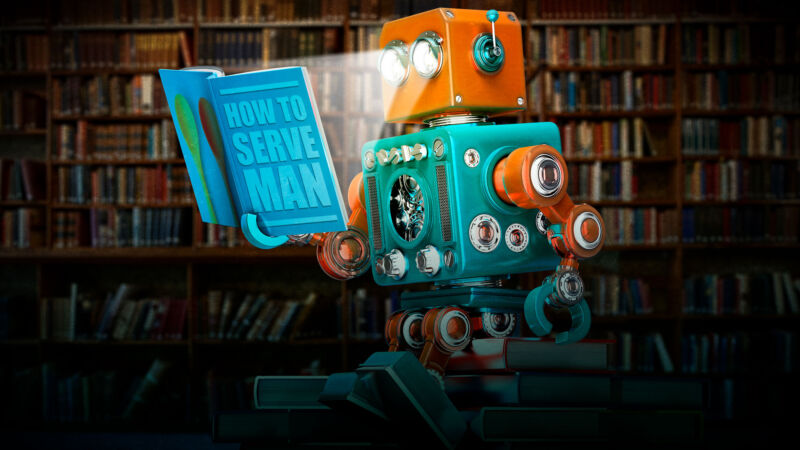
Enlarge / “It’s a cookbook?!” (credit: Aurich Lawson | Getty Images)
“Artificial Intelligence” as we know it today is, at best, a misnomer. AI is in no way intelligent, but it is artificial. It remains one of the hottest topics in industry and is enjoying a renewed interest in academia. This isn’t new—the world has been through a series of AI peaks and valleys over the past 50 years. But what makes the current flurry of AI successes different is that modern computing hardware is finally powerful enough to fully implement some wild ideas that have been hanging around for a long time.
Back in the 1950s, in the earliest days of what we now call artificial intelligence, there was a debate over what to name the field. Herbert Simon, co-developer of both the logic theory machine and the General Problem Solver, argued that the field should have the much more anodyne name of “complex information processing.” This certainly doesn’t inspire the awe that “artificial intelligence” does, nor does it convey the idea that machines can think like humans.
However, “complex information processing” is a much better description of what artificial intelligence actually is: parsing complicated data sets and attempting to make inferences from the pile. Some modern examples of AI include speech recognition (in the form of virtual assistants like Siri or Alexa) and systems that determine what’s in a photograph or recommend what to buy or watch next. None of these examples are comparable to human intelligence, but they show we can do remarkable things with enough information processing.
